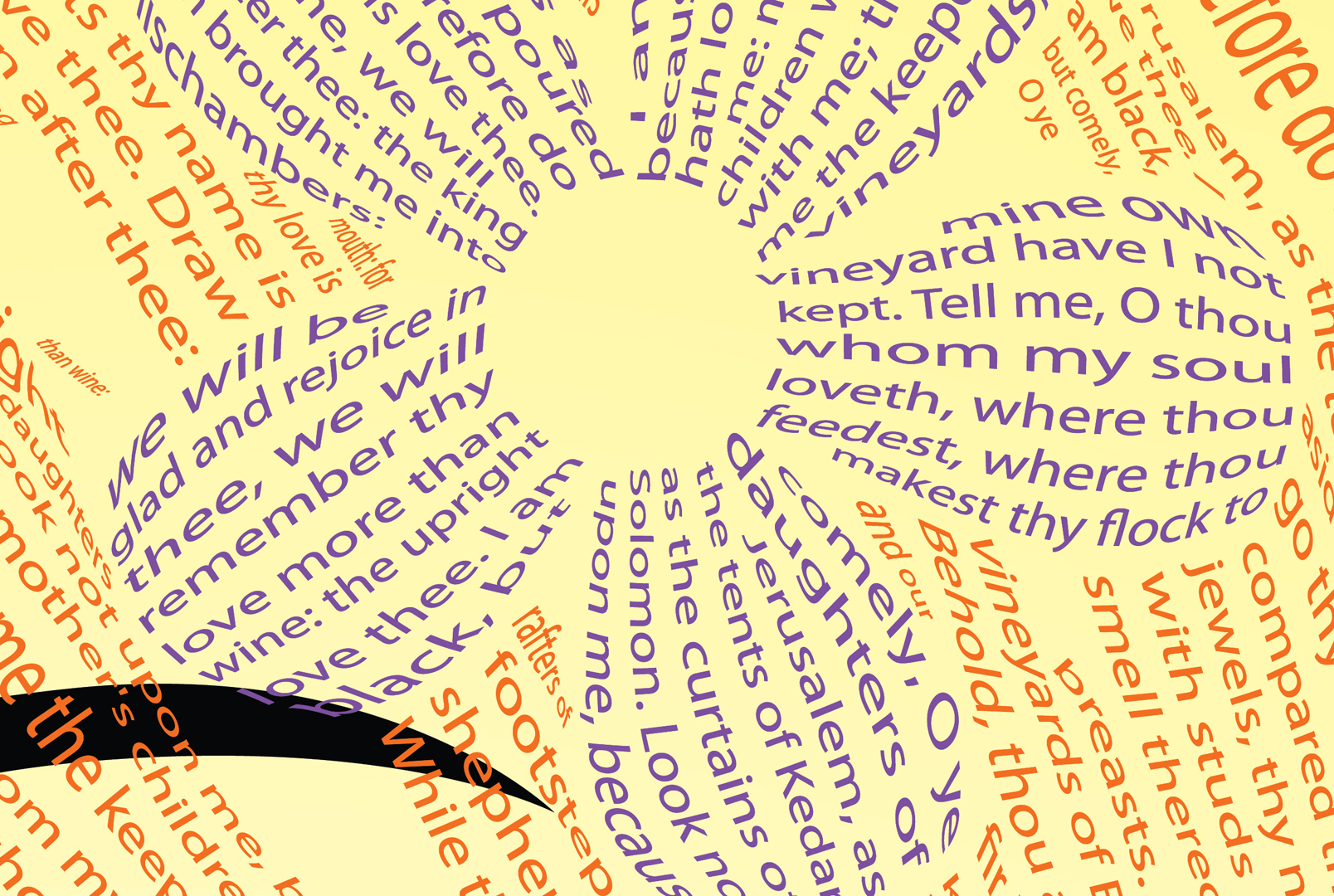“Digital micrography” by Maharik, Bessmeltsev, Sheffer, Shamir and Carr
Conference:
Type(s):
Title:
- Digital micrography
Presenter(s)/Author(s):
Abstract:
We present an algorithm for creating digital micrography images, or micrograms, a special type of calligrams created from minuscule text. These attractive text-art works successfully combine beautiful images with readable meaningful text. Traditional micrograms are created by highly skilled artists and involve a huge amount of tedious manual work. We aim to simplify this process by providing a computerized digital micrography design tool. The main challenge in creating digital micrograms is designing textual layouts that simultaneously convey the input image, are readable and appealing. To generate such layout we use the streamlines of singularity free, low curvature, smooth vector fields, especially designed for our needs. The vector fields are computed using a new approach which controls field properties via a priori boundary condition design that balances the different requirements we aim to satisfy. The optimal boundary conditions are computed using a graph-cut approach balancing local and global design considerations. The generated layouts are further processed to obtain the final micrograms. Our method automatically generates engaging, readable micrograms starting from a vector image and an input text while providing a variety of optional high-level controls to the user.
References:
1. Adobe, 2010. Illustrator CS5 adobe.com/products/illustrator.Google Scholar
2. Amenta, N., and Bern, M. 1999. Surface reconstruction by voronoi filtering. Discrete and Computational Geometry 22. Google Scholar
3. Apollinaire, G., and Greet, A. H. 1980. Calligrammes: poems of peace and war (1913-1916): A Bilingual Edition. University of California Press, Berkeley.Google Scholar
4. Asente, P. 2010. Folding avoidance in skeletal strokes. In Sketch Based Interfaces and Modeling, Eurographics, ACM. Google Scholar
5. Avrin, L. 1981. Hebrew Micrography – One Thousand Years of Art in Script. Israel Museum, Jerusalem.Google Scholar
6. Bommes, D., Zimmer, H., and Kobbelt, L. 2009. Mixed-integer quadrangulation. ACM Trans. Graph. 28 (July). Google ScholarDigital Library
7. Chen, G., Esch, G., Wonka, P., Muller, P., and Zhang, E. 2008. Interactive procedural street modeling. ACM Trans. Graph. 27, 3. Google ScholarDigital Library
8. Crane, K., Desbrun, M., and Schröder, P. 2010. Trivial connections on discrete surfaces. Computer Graphics Forum (SGP) 29, 5, 1525–1533.Google ScholarCross Ref
9. Edmonds, J. 1967. Optimum branchings. Journal of Research of the National Bureau of Standurds 71B, 233–240.Google ScholarCross Ref
10. Fisher, M., Schröder, P., Desbrun, M., and Hoppe, H. 2007. Design of tangent vector fields. ACM Trans. Graph. 26 (July). Google ScholarDigital Library
11. Froumentin, M., 2010. Textorizer lapin-bleu.net/software/textorizer.Google Scholar
12. Gill, P. E., Murray, W., and Wright, M. H. 1981. Practical Optimization. Academic Press.Google Scholar
13. Helmond, A., 2010. Textaizer mosaizer.com/Textaizer.Google Scholar
14. Jobard, B., and Lefer, W. 1997. Creating evenly-spaced streamlines of arbitrary density. In Eurographics Workshop, Eurographics, 43–56.Google Scholar
15. Jodoin, P.-M., Epstein, E., Granger-Piché, M., and Ostromoukhov, V. 2002. Hatching by example: a statistical approach. In Proceedings of the 2nd international symposium on Non-photorealistic animation and rendering, ACM, New York, NY, USA, NPAR ’02, ACM, 29–36. Google Scholar
16. Karp, R. 1972. Reducibility among combinatorial problems. In Complexity of Computer Computations, R. Miller and J. Thatcher, Eds. Plenum Press, 85–103.Google Scholar
17. Knuth, D. E. 1997. Digital Typography. Cambridge University Press, New York, NY, USA. Google Scholar
18. Li, Y., Bao, F., Zhang, E., Kobayashi, Y., and Wonka, P. 2010. Geometry synthesis on surfaces using field-guided shape grammars. IEEE Transactions on Visualization and Computer Graphics 99, RapidPosts. Google Scholar
19. Ostromoukhov, V., and Hersch, R. D. 1999. Multi-color and artistic dithering. In Proceedings of the 26th annual conference on Computer graphics and interactive techniques, ACM Press/Addison-Wesley Publishing Co., New York, NY, USA, SIGGRAPH ’99, ACM, 425–432. Google Scholar
20. Palacios, J., and Zhang, E. 2007. Rotational symmetry field design on surfaces. ACM Trans. Graph. (Proc. Siggraph 2007) 26 (July). Google Scholar
21. Pedersen, H., and Singh, K. 2006. Organic labyrinths and mazes. In Proceedings of NPAR’06, ACM, 79–86. Google Scholar
22. Praun, E., Hoppe, H., Webb, M., and Finkelstein, A. 2001. Real-time hatching. In Proceedings of the 28th annual conference on Computer graphics and interactive techniques, ACM, New York, NY, USA, SIGGRAPH ’01, ACM. Google Scholar
23. Ray, N., Vallet, B., Li, W. C., and Lévy, B. 2008. N-symmetry direction field design. ACM Trans. Graph. 27 (May), 10:1–10:13. Google ScholarDigital Library
24. Ray, N., Vallet, B., Alonso, L., and Lévy, B. 2009. Geometry aware direction field processing. ACM Transactions on Graphics. Google Scholar
25. Shapira, L., Shamir, A., and Cohen-Or, D. 2008. Consistent mesh partitioning and skeletonization using the shape diameter function. The Visual Computer 24, 4 (April), 249–259. Google ScholarDigital Library
26. Sharma, G. 2002. Digital Color Imaging Handbook. CRC Press, Inc., Boca Raton, FL, USA. Google Scholar
27. Surazhsky, T., and Elber, G. 2000. Arbitrary precise orientation specification for layout of text. In Proceedings. The Eighth Pacific Conference on Computer Graphics and Applications, Eurographics, 80–86. Google ScholarDigital Library
28. Tondreau, B. 2009. Layout Essentials: 100 Design Principles for Using Grids. Rockport Publishers.Google Scholar
29. Vahe, 2009. Micrography: Text art and typography. gawno.com/2009/05/micrography-text-art-and-typography.Google Scholar
30. Wong, M. T., Zongker, D. E., and Salesin, D. H. 1998. Computer-generated floral ornament. In Proceedings of the 25th annual conference on Computer graphics and interactive techniques, ACM, New York, NY, USA, SIGGRAPH ’98, ACM. Google Scholar
31. Xu, J., and Kaplan, C. S. 2007. Calligraphic packing. In Proceedings of Graphics Interface 2007, ACM, New York, NY, USA, GI ’07, ACM, 43–50. Google Scholar
32. Xu, J., and Kaplan, C. S. 2007. Image-guided maze construction. In ACM SIGGRAPH 2007 papers, ACM, New York, NY, USA, SIGGRAPH ’07, ACM. Google Scholar
33. Xu, K., Cohen-Or, D., Ju, T., Liu, L., Zhang, H., Zhou, S., and Xiong, Y. 2009. Feature-aligned shape texturing. ACM Transactions on Graphics, (Proceedings SIGGRAPH Asia 2009) 28, 5, 108:1–108:7. Google Scholar
34. Xu, X., Zhang, L., and Wong, T.-T. 2010. Structure-based ascii art. ACM Trans. Graph. 29 (July), 52:1–52:10. Google ScholarDigital Library
35. Zachrisson, B. 1965. Studies in the Legibility of Printed Text. Almqvist & Wiksell.Google Scholar




